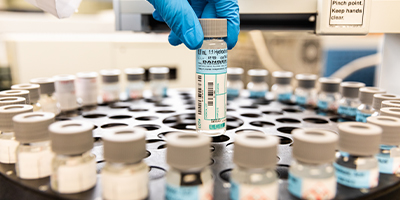Background
 Six commonly found per- and polyfluoroalkyl substances (PFAS) are known as PFOS, PFOA, PFNA, PFBS, PFHxS, and GenX. These are manmade compounds that have been used to make carpets, clothing, fabrics for furniture, paper packaging for food, and other materials (e.g., cookware) that are resistant to water, grease, or stains. They are also used in aqueous film forming foams for firefighting at airfields and other locations, and in a number of industrial processes.
Six commonly found per- and polyfluoroalkyl substances (PFAS) are known as PFOS, PFOA, PFNA, PFBS, PFHxS, and GenX. These are manmade compounds that have been used to make carpets, clothing, fabrics for furniture, paper packaging for food, and other materials (e.g., cookware) that are resistant to water, grease, or stains. They are also used in aqueous film forming foams for firefighting at airfields and other locations, and in a number of industrial processes.
On April 10, 2024, the U.S. Environmental Protection Agency (EPA) announced the final National Primary Drinking Water Regulation for these types of PFAS. The regulation calls for a maximum contaminant level (MCL) for:
- PFOS: 4 parts per trillion (ppt)
- PFOA: 4 ppt
- PFHxS: 10 ppt
- PFNA: 10 ppt
- GenX (HFPO-DA): 10 ppt
The EPA also set a combined hazard index limit of 1.0 for any combination of PFNA, PFHxS, PFBS, and GenX; the hazard index calculation would determine if the levels of these PFAS as a mixture pose a potential risk.
Water systems must begin monitoring for these PFAS within three years (2027), and must comply with the regulation within five years (2029).
Additionally, the State of Washington has an “action level” for five of the above PFAS substances and directed most water suppliers to begin testing between 2023-2025. An action level is the level at which a supplier should make operational changes to protect normal consumers over a lifetime of consumption or sensitive populations over a shorter period. Action levels for PFAS substances are:
- PFOS: 15 ppt
- PFOA: 10 ppt
- PFNA: 9 ppt
- PFHxS: 65 ppt
- PFBS: 345 ppt
How Washington Water is Addressing PFAS
 Protecting our customers’ health and safety is our highest priority, and Cal Water is committed to complying with all requirements set by the public health experts. We have been preparing for the EPA regulation and its potential impact on—and treatment needed in—our systems, and already evaluated the impact of the proposed regulation so that we could be better prepared to comply with the final MCLs.
Protecting our customers’ health and safety is our highest priority, and Cal Water is committed to complying with all requirements set by the public health experts. We have been preparing for the EPA regulation and its potential impact on—and treatment needed in—our systems, and already evaluated the impact of the proposed regulation so that we could be better prepared to comply with the final MCLs.
We have protocols to test our water sources for compliance with the new MCLs and have tested all active sources in our Washington systems. In cases where detections were above the levels at which state public health experts have recommended water suppliers take action (the Action Level), we took the affected sources out of service until treatment was/can be installed or made operational adjustments to reduce those levels.
Studies indicate that long-term exposure to PFAS over certain levels could have adverse health effects, including developmental effects to fetuses during pregnancy or breastfed infants; cancer; or liver, immunity, thyroid, and other effects. Potential health impacts related to PFAS from all sources (which also include food wrappers, firefighting foam, and non-stick cookware, for example) are still being studied, and research is still evolving on this issue.
We have long supported EPA’s establishment of national drinking water MCLs for certain PFAS and are moving forward to treat any affected sources in accordance with all federal and state requirements. Essentially, while we did not put the PFAS in the water, we are committed to treating for it.
That said, we believe a comprehensive regulatory approach is needed to properly address the situation. We strongly support state legislation that will prohibit the sale and use of certain products that contain PFAS, require the certification of accurate testing methods for PFAS, and establish a publicly accessible database that houses the sources of PFAS entering water supplies. We have also filed lawsuits to hold the manufacturers of the compounds financially responsible for the costs of testing and treatment, and are pursuing grants were available, to reduce reduce the financial impact on our customers.
More information on the EPA’s new regulation is available in its April 10, 2024 press release.
Artondale system customers: Get details about information mailed to you in September 2023.
Classic Heights system customers: Get details regarding the letter sent to you in December 2023.
Common Names
- PFOS: perfluoroctanesulfonic acid and perfluoroctylsulfonic acid
- PFOA: perfluorocaprylic acid, perfluoroctanoic acid, and perfluoroheptanecarboxylic acid
- PFNA: perfluorononanoic acid
- PFBS: perfluorobutane sulfonic acid and potassium perfluorobutane sulfonate (together)
- PFHxS: perfluorohexane sulfonic acid
- GenX: hexafluoropropylene oxide dimer acid & its ammonium salt


